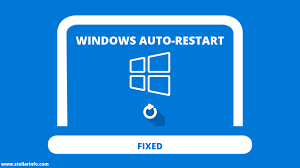Foris (Restart Auto) A Complete Guide to Automated System Restarts

In today’s fast-paced digital world, system stability and efficiency are critical for businesses and individual users alike. Unexpected crashes, sluggish performance, and software failures can be frustrating and disruptive. This is where Foris comes into play. This powerful tool automates the restart process, ensuring smooth operation and minimizing downtime. In this comprehensive guide, we’ll explore what Foris (Restart Auto) is, how it works, its benefits, and how to use it effectively.
What is Foris (Restart Auto)
Foris (Restart Auto) is an advanced automation tool designed to handle system reboots efficiently. Whether for personal computers, enterprise servers, or industrial systems, this software ensures that devices restart at predefined intervals or in response to specific triggers. By automating the restart process, Foris helps maintain optimal performance, reduce system errors, and enhance security.
How Does Foris (Restart Auto) Work?
Foris (Restart Auto) operates through a combination of scheduled tasks, event-based triggers, and intelligent system monitoring. Here’s a breakdown of its core functionalities:
- Scheduled Restarts: Users can set specific times and frequencies for automatic system reboots.
- Trigger-Based Restarts: The software detects certain conditions (e.g., high CPU usage, memory leaks, software crashes) and initiates a restart automatically.
- Remote Management: Some versions of Foris allow administrators to restart systems remotely.
- Customizable Alerts: Users receive notifications before a restart, allowing them to save their work and prepare accordingly.
- Logging and Reports: The system logs all restart activities, providing insights into system health and performance trends.
Benefits of Using Foris (Restart Auto)
Foris (Restart Auto) provides a range of benefits that make it an invaluable tool for individuals and businesses. Some key advantages include:
1. Enhanced System Performance
Over time, computers and servers accumulate temporary files and memory leaks that slow down operations. Regular restarts help clear these inefficiencies, ensuring smooth performance.
2. Reduced System Crashes
By proactively restarting devices, Foris (Restart Auto) minimizes the risk of software crashes and system freezes, which can be costly and time-consuming to resolve.
3. Improved Security
Frequent reboots help apply critical system updates and security patches. Automated restarts ensure that updates are installed promptly, reducing vulnerabilities.
4. Increased Productivity
Automation reduces the need for manual interventions, allowing IT teams and users to focus on other essential tasks instead of worrying about system reboots.
5. Energy Efficiency
Foris can schedule restarts during off-peak hours, reducing unnecessary energy consumption and improving resource management.
How to Install and Use Foris (Restart Auto)
Installing and configuring Foris (Restart Auto) is a straightforward process. Here’s a step-by-step guide:
Step 1: Download and Install
- Visit the official website or a trusted source to download Foris (Restart Auto).
- Follow the installation wizard and accept the necessary permissions.
Step 2: Configure Restart Settings
- Open the application and navigate to the settings menu.
- Set up a restart schedule based on your preferred frequency (daily, weekly, or monthly).
- Enable trigger-based restarts if needed.
Step 3: Customize Notifications
- Configure alert settings to receive notifications before a restart occurs.
- Set up email or SMS alerts for added convenience.
Step 4: Monitor and Adjust Settings
- Regularly check logs and reports to analyze restart patterns.
- Adjust settings based on performance metrics and user feedback.
Common Use Cases for Foris (Restart Auto)
Foris (Restart Auto) is useful in various scenarios, including:
1. Enterprise IT Management
Large businesses use Foris (Restart Auto) to maintain server uptime, manage software updates, and prevent system failures.
2. Personal Computer Maintenance
Home users rely on the software to keep their PCs running smoothly without manual restarts.
3. Gaming and Streaming Optimization
Gamers and streamers use automated restarts to ensure their systems perform optimally, reducing lag and crashes.
4. Industrial Automation Systems
Factories and industrial setups integrate Foris (Restart Auto) to reboot machinery and control systems at scheduled intervals.
Troubleshooting Common Issues
While Foris is designed for seamless operation, users may occasionally encounter issues. Here are some troubleshooting tips:
Issue 1: System Doesn’t Restart as Scheduled
- Check if the software has the necessary administrative permissions.
- Ensure the scheduled task is enabled and correctly configured.
Issue 2: Unexpected Restarts
- Review event logs to identify what triggered the restart.
- Adjust threshold settings for CPU usage and memory leaks.
Issue 3: Notifications Not Working
- Verify email/SMS settings and ensure they are correctly configured.
- Check firewall or security settings that may be blocking alerts.
Conclusion
Foris (Restart Auto) is a powerful tool that simplifies system maintenance, improves performance, and enhances security through automated restarts. Whether you’re managing personal computers, enterprise servers, or industrial systems, this software can help you stay ahead of potential issues. By following the steps outlined in this guide, you can maximize the benefits of Foris (Restart Auto) and ensure smooth, uninterrupted operation.




